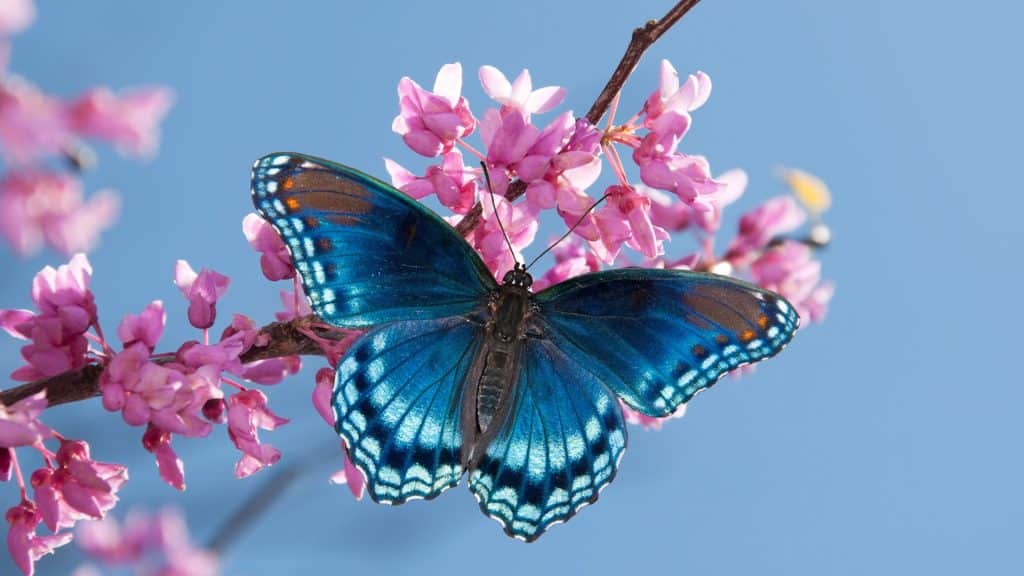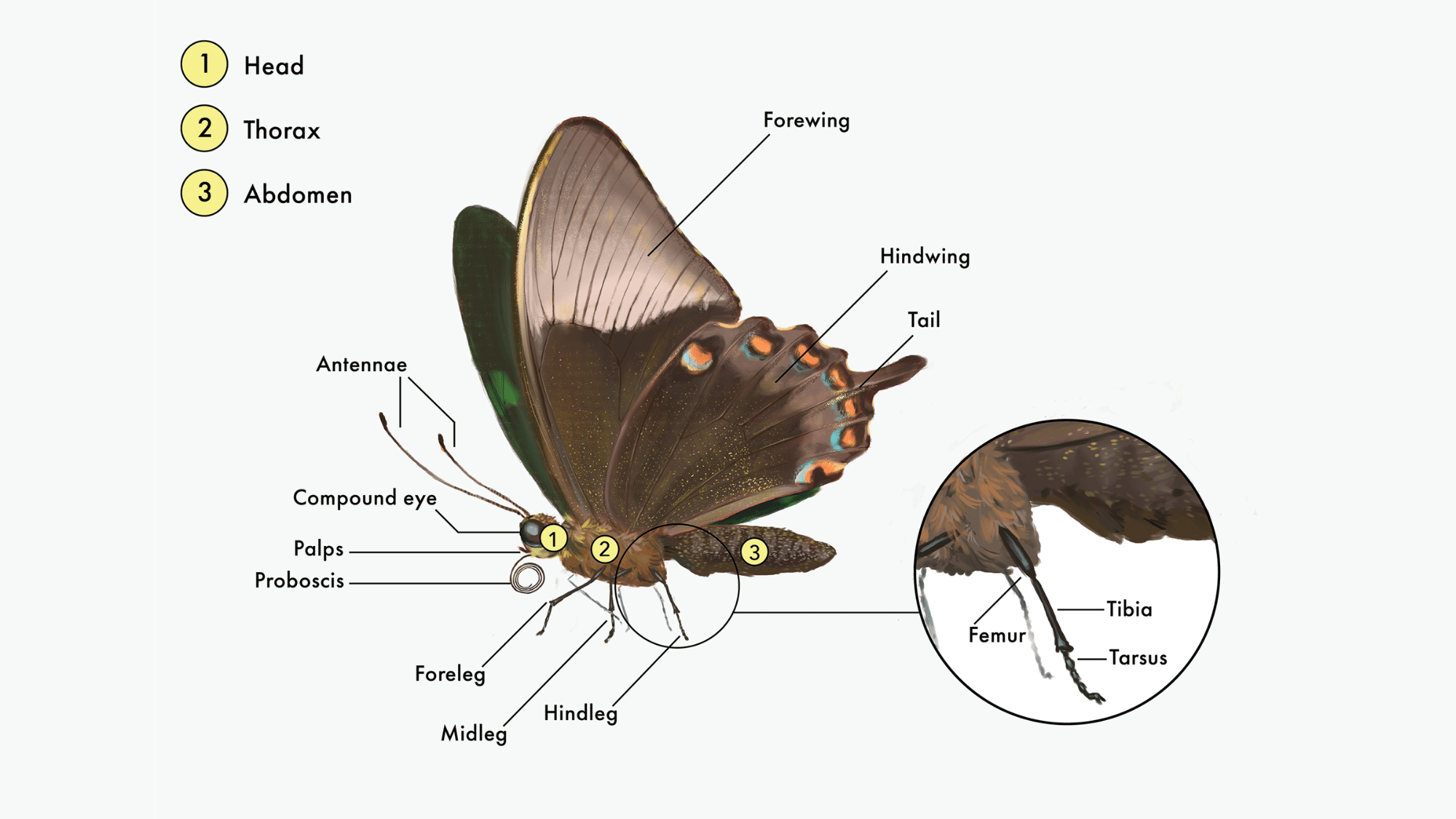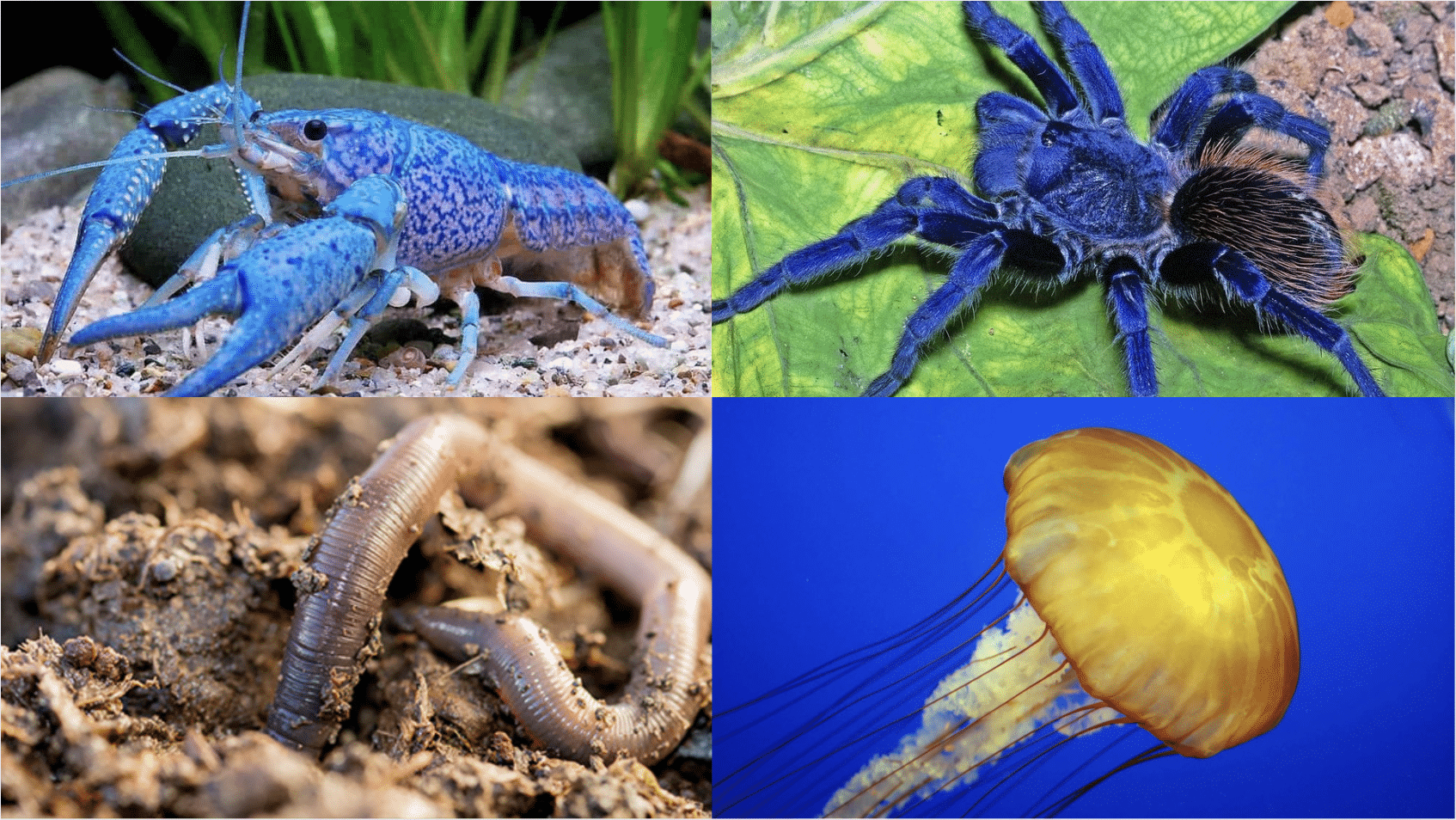Butterflies are among the most eye-catching creatures, fluttering through gardens with their vibrant wings and graceful movements.
With their delicate bodies and interesting changes, they’ve always been a source of wonder and curiosity. But there’s more to these insects than just their beauty.
A common question that arises: What exactly are they?
Some people think they’re too soft to have bones, while others wonder if their wings hide a skeleton. It’s not just about their wings or colors; it’s about their physical structure.
In this blog, we’ll learn what butterflies are made of and where they fit in the animal kingdom.
What Makes an Animal a Vertebrate or Invertebrate
Animals are grouped based on one clear feature: the backbone. This simple difference decides how their bodies are built, how they move, and how they survive in different environments.
Key Points:
- Vertebrates have a backbone made of bones, like dogs, fish, and birds.
- Invertebrates don’t have a backbone and include insects, worms, and jellyfish.
- Some invertebrates have a hard outer shell called an exoskeleton.
- Others are soft-bodied and move in flexible ways without any shell or bones.
- The presence or absence of a backbone is the easiest way to classify animals.
Looking at whether an animal has a backbone helps explain how it lives and moves. This one feature gives a quick and clear way to understand different kinds of animals around us.
Is a Butterfly a Vertebrate or Invertebrate
Butterflies don’t have a backbone, which puts them in the invertebrate group. Instead of bones, their bodies are held together by a tough outer shell called an exoskeleton.
This shell protects their body and keeps them from drying out. Inside, there are no bones, just soft tissues and muscles that help them fly, eat, and move around.
Like all insects, butterflies have six legs, two antennae, and three main body parts: head, thorax, and abdomen.
All of these features match what invertebrates have. So while they may look delicate, that outer shell gives them the strength to flutter, feed, and even travel long distances without any bones at all.
The Anatomy of a Butterfly
Take a closer look at the different body parts of a butterfly and how they help it survive.
- Antennae: Butterflies use their antennae to detect scents in the air, helping them find food, mates, and maintain balance during flight.
- Compound Eye: Each eye is made of many small lenses (ommatidia), allowing butterflies to see movement, light, and colors, including ultraviolet light.
- Proboscis: The proboscis coils when not in use and uncoils to reach deep into flowers for feeding.
- Palps: Palps help butterflies taste and feel food before feeding, guiding the proboscis to nectar-rich areas on a flower.
- Head: The head includes the eyes, antennae, brain, and proboscis—essential for seeing, smelling, and feeding.
- Thorax: This middle section connects to all six legs and four wings. It contains strong muscles used for walking and flying.
- Forewing: The upper pair of wings is used in combination with hindwings to glide, steer, and maintain balance in flight.
- Hindwing: The lower wings support takeoff, gliding, and quick turns, essential for avoiding predators.
- Abdomen: The flexible, rear body part that houses internal organs and spiracles for gas exchange.
- Spiracles: They allow oxygen into the body and help release carbon dioxide, functioning like lungs for the butterfly.
- Foreleg: In some butterfly species, forelegs are tiny and help detect chemical signals on leaves or flowers.
- Midleg: The middle legs aid in balance and help the butterfly grip surfaces when feeding or resting.
- Hindleg: The strongest pair of legs, used for extra stability when landing or crawling.
- Femur: It links the leg to the thorax and powers movement, especially while climbing or shifting positions.
- Tibia: Connects the femur to the tarsus, aiding in leg flexibility and smooth, controlled motion.
- Tarsus: Used for gripping surfaces, landing, and tasting through chemical receptors on the pads.
Common Misconceptions About Butterflies
Butterflies are full of surprises, and many things we think we know about them just aren’t true.
| Myth | Fact |
|---|---|
| Butterflies are weak. | They’re tougher than they look and can survive in various weather and travel long distances. |
| Touching their wings kills them instantly. | It may damage their scales, but it doesn’t always mean instant death. |
| Moths and butterflies are the same. | They differ in behavior, appearance, and even how they rest their wings. |
| All butterflies live for only a few days. | Some species live for weeks or even months, depending on their type and environment. |
Other Examples of Invertebrates
They make up the majority of animal species on Earth and live in almost every habitat, from forests to oceans.
Main Groups of Invertebrates
There are several key types of invertebrates, each with different body structures and features.
- Insects: Ants, beetles, bees
- Arachnids: Spiders, scorpions
- Worms: Earthworms, flatworms
- Mollusks: Snails, slugs
- Marine Invertebrates: Jellyfish, starfish
- Crustaceans: Crabs, lobsters, shrimp
All invertebrates lack a backbone. Some have hard outer shells (exoskeletons), others are soft-bodied. They support ecosystems by helping with pollination, soil health, and food chains.
Fun Facts About Butterflies
Butterflies may look delicate, but they’ve got some wonderful features and hidden skills that help them survive in surprising ways.
- Butterflies taste with their feet to check if a plant is good for laying eggs or feeding.
- Their antennae help them smell flowers and find nectar even from a far distance.
- Some butterfly species migrate more than 3,000 miles across continents to find better weather.
- Butterfly wings are see-through beneath the colorful scales that create their bright patterns.
- Around 20,000 different butterfly species exist, each with its own shape, color, and design.
- Certain butterflies can blend into leaves or bark to hide from predators.
- Closed wings often help them look like dry leaves or natural surfaces when resting.
- Butterfly colors come from light bouncing off tiny overlapping scales on their wings.
Conclusion
Butterflies may seem simple, but learning about them reveals just how special they are. From how their bodies are built to the group of animals they belong to, everything about them has a purpose.
By knowing what sets them apart, like their outer shell, unique body parts, and role in nature, we get a better picture of how they live and survive.
These tiny creatures are not just nice to look at; they’re full of surprising traits and designs that support their way of life.
Understanding butterflies shows how even the smallest animals have interesting stories worth knowing.






















